Monetization Boot Camp Day 1: The Basics
Alright, Boot Campees – Welcome to Day One: The Basics!
In today’s post, we’re covering some basic concepts, terms, and tools in a generally broad overview. As the boot camp progresses, we’ll go into more detail, and also answer any questions we receive along the way. This is an intensive course – the posts are somewhat lengthy, but chock o’block full of great information.

Most of us blog because we want to share our opinions, thoughts, feelings, recipes, projects, methods, et cetera with others online; there are very few bloggers out there who don’t want to receive a lot of visitors to their site. For some, the holy grail of blogging is to make enough money from blogging to not have to have a job at all. While there are some bloggers out there who can do just that, they are the exception – not the rule.
However, there are plenty of things a blogger can do to make some money from his or her site. It’s important to have realistic goals for your income, especially when you’re just getting started. There are some websites out there which make it sound like you can instantly start making enormous sums of money immediately, but that is generally not the case for most bloggers. It takes time (sometimes months, sometimes years) to build up a loyal readership.
How do we build up those readers?
Hands-down, the most important thing a blogger can do to increase both traffic and potential blogging income is to write quality content. We cannot stress this enough – unique, quality content interesting to the target audience is the most important factor in driving traffic to your blog, and therefore, in monetizing it.
 Remember the line, “if you build it, they will come?” That works for blogging, too: “If you write it, they will visit.” Time spent at the keyboard pays off.
Remember the line, “if you build it, they will come?” That works for blogging, too: “If you write it, they will visit.” Time spent at the keyboard pays off.
Freshness is key – if you’re only posting once a month, people may not visit your site often. However, if you’re posting a few times per week, daily, or even multiple times per day, that keeps your audience’s craving for new material sated, and piques their interest. They’ll come back more often, thereby giving you more opportunities for them to see and avail themselves of your monetizing opportunities.
Your posts should be relevant to the general topics of your blog, but you needn’t write exclusively about food if you’re a food blogger; sometimes a change of pace is exactly what will bring in new visitors. Also, readers usually love to hear about the blogger’s personal life – little insider tidbits that lets readers feel closer to the author. Did you completely screw something up? It might bring your readers closer to you if you write about how you’re not A Perfect Suzy Homemaker. Keep your primary focus on your main categories, but deviate from them sometimes, too.
Find a style of writing that suits you and makes it enjoyable to write. Not everyone wants to read cutting-edge, in-your-face, or wildly hilarious posts (at least not all the time;) sometimes, a comfortable, friendly, warm voice is just what the doctor ordered. Do you want your readers to feel like they’re in the room with you, just talking, or do you need to present a more clinical, authoritative face to effectively showcase your material? It’s your call!

While you can vary your style a bit from post to post, depending upon its topic, developing a writing voice which is both entertaining for your readers and for yourself is key. It’s no fun to force yourself to write in an unnatural tone, which might mean you’ll write less often. Writing your blog should be a rewarding experience – don’t be like Erin over there, ready to commit blogging suicide because she couldn’t find her voice for a post.
Ok – you have your quality content now, and are waiting for the hordes to start rolling in! People will not just randomly start visiting your site out of the blue, however; you’ll have to do some work to get the word about your site out there. Search engines will do some of the work for you, and we’ll talk about SEO (Search Engine Optimization) more fully below. However, you will also need to start “pollinating” your website’s URL on other blogs, and on social media such as Google+, Facebook, and Twitter, if you really want to spread the word.
 When you post comments on most other blogs, there is often a field within the comment posting area where you can enter your URL (your website’s address – our URL is http://homesteadgeek.com for example.) Some also have fields for Twitter names. We recommend filling in all possible vectors for driving traffic to your site (using social media will be the topic of a post later in the series.) Putting your URL into your email signature will also help people to find you.
When you post comments on most other blogs, there is often a field within the comment posting area where you can enter your URL (your website’s address – our URL is http://homesteadgeek.com for example.) Some also have fields for Twitter names. We recommend filling in all possible vectors for driving traffic to your site (using social media will be the topic of a post later in the series.) Putting your URL into your email signature will also help people to find you.

Posting the URL on related websites will help to ensure the appropriate audience is seeing your site. If you’re writing about homesteading, it’s best to publicize yourself on homestead-oriented sites; posting on websites about hot rods or sporting goods will likely not garner much additional traffic. This isn’t to say it’s not worth doing – we all have very different hobbies, and there will be homesteaders on those sites in some amount – but your focus should be on related blogs.
WordPress blogs that use the CommentLuv plugin will even automatically link back to your most recent post, and CommentLuv Premium (which is provided free to all Black Chicken Host customers) will let commenters select from a variety of their recent posts. This is an example:
Commenting on other sites frequently will get your website noticed, and many authors will visit commenters’ websites and comment back as a courtesy. If she likes your posts, she may draw attention to it. Sometimes, all it takes is for one popular blogger to post a link to your website and you’ll gain dozens, hundreds, or thousands of new readers in one fell swoop.
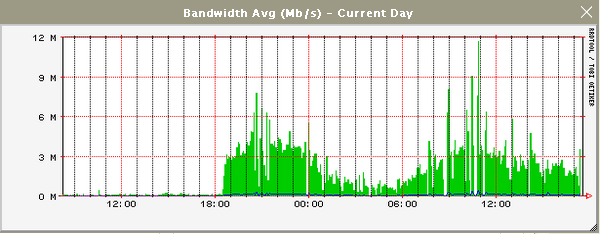
If other readers of the site you commented on like what you wrote, they will often click on your URL. It is important to post thoughtful, relevant comments – posting only “me too!” will likely not gather much additional traffic. Leaving comments that show you read and thought about the post, or which add information or resources, will get more attention. Think about the comments you like to read, and what prompts you to click on someone’s link.
Thus far, we’ve covered two very important elements of blogging success: Writing quality content, and leaving your website’s URL on other blogging sites as an addition to a good comment.
Next, we’ll cover some basic terminology.
Monetizing: This is somewhat of a buzzword, and while we at Black Chicken Host are generally averse to such lingo, in a series covering making money from blogging it’s hard to get away from. “Monetizing” historically referred to the process of converting or establishing something into legal tender; however, in the blogging world, it simply means “making money from your blog.” There are a number of ways this can occur, and we’ll cover the most popular (and legal) methods.
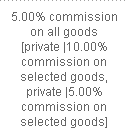 Affiliate Programs: An affiliate program allows bloggers to make money by linking to commercial websites with a special, user-specific URL that is tracked by the vendor website. Should a person who clicks that affiliate URL make a purchase, the blogger will receive some form of commission from the sale. Commissions vary widely from vendor site to vendor site. Some offer a one-time flat commission, some a one-time percentage of the sale, some an ongoing percentage (usually for subscription-type accounts.) To participate in an affiliate program, the blogger must sign up and receive her unique affiliate URL. We’ll talk about how to best use that URL in a future boot camp.
Affiliate Programs: An affiliate program allows bloggers to make money by linking to commercial websites with a special, user-specific URL that is tracked by the vendor website. Should a person who clicks that affiliate URL make a purchase, the blogger will receive some form of commission from the sale. Commissions vary widely from vendor site to vendor site. Some offer a one-time flat commission, some a one-time percentage of the sale, some an ongoing percentage (usually for subscription-type accounts.) To participate in an affiliate program, the blogger must sign up and receive her unique affiliate URL. We’ll talk about how to best use that URL in a future boot camp.
Advertising Programs: There are many ways to place ads on your website. We’ll cover two here.
Google AdSense is a popular method, as is the Foodie Blogroll. Programs such as these require the placement of special codes into widgets on your website which automatically choose ads for your site based on a.) the content of your site, b.) the browsing history of the person viewing your site, or c.) the advertising program’s own specific algorithms. There are pros and cons to this type of advertising program. On one hand, they are typically very easy to implement and will offer your readers ads likely geared toward their personal interests. On the other, you typically have very little control about the type of ads which may appear on your site.
Google’s AdSense will let the blogger deny broad categories of ads, as shown here:
Other ad promoters may not allow any measure of control. It can be discouraging to see ads for services or products you do not endorse on your site, so use caution when placing automatic ads on your blog.
These types of ads typically do not generate much revenue unless you have a high-traffic site; however, many programs are pay-per-click, so a reader need not make a purchase – they only need to click on the ad itself to earn your money.
Affiliate Ads: Most affiliate programs will have a selection of ads in different sizes and shapes available when you log into your affiliate account. You may choose the style, size, and shape best-suited for your blog and copy the code for that ad into your widget. This allows absolute control over what appears on your website, and ensures only products you personally endorse appear. Well-known affiliate programs are Amazon, Link Share, E-Junkie. There are WordPress plugins we’ll cover in a later post which makes affiliate linking quicker and easier.
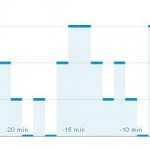 Search Engine Optimization (SEO): SEO is the source of much debate and contention. There are a lot of sleazy and unethical people out there who promise to “get your website to the top of Google’s search via the magic of SEO,” and who will charge a small fortune to do so. Typically, these people are not worth paying! Save the money you’ll spend on an “SEO Expert” and put it toward buying a custom or premium theme for your blog, or save it and earn interest. Our web site designer, Chris the Web Guy, has a six-part series on cultivating Organic SEO, which we recommend.
Search Engine Optimization (SEO): SEO is the source of much debate and contention. There are a lot of sleazy and unethical people out there who promise to “get your website to the top of Google’s search via the magic of SEO,” and who will charge a small fortune to do so. Typically, these people are not worth paying! Save the money you’ll spend on an “SEO Expert” and put it toward buying a custom or premium theme for your blog, or save it and earn interest. Our web site designer, Chris the Web Guy, has a six-part series on cultivating Organic SEO, which we recommend.
In a nutshell, SEO attempts to make your website as attractive as possible to search engine algorithms. What’s a search engine algorithm? It’s really, really complicated. However, the simplest definition is, “an elaborate series of queries which determine how relevant a given page is to a given search.” Algorithms are closely-guarded by search engines so people cannot exploit them and artificially increase their score, so “SEO experts” who tell you they know exactly how Google’s algorithm works are likely misleading you. You can read a detailed technical analysis of Google from Stanford to better understand the principles involved.
 Widgets: Most WordPress users know what a “widget” is – it’s a special area within WordPress which adds functionality or improves the ease with which we can perform tasks. Our Web Guy calls them “little ‘do whatever the frick you want’ boxes,” because they don’t follow the same rules as posts and pages. There is a metric honkload of widgets associated with affiliate and ad linking, and we’ll cover some of the best later in the series.
Widgets: Most WordPress users know what a “widget” is – it’s a special area within WordPress which adds functionality or improves the ease with which we can perform tasks. Our Web Guy calls them “little ‘do whatever the frick you want’ boxes,” because they don’t follow the same rules as posts and pages. There is a metric honkload of widgets associated with affiliate and ad linking, and we’ll cover some of the best later in the series.
Analytics: Analytics, or metrics, are a means of tracking information about how your site is used. Google Analytics has become the most popular method, and is supported by a number of robust plugins. There is a staggering amount of information provided by Google Analytics, including real-time traffic monitoring, daily, weekly, monthly, and yearly traffic counts, search queries that brought visitors to your site, the amount of time each visitor spent on each page, and much more. Here is an example of some of the charts:
There are many more powerful tools within Google Analytics – far too many to cover here – and we may do a boot camp on this fantastic tool in the future.
So what have we learned today? We talked about some basic concepts related to monetizing a blog, such as providing interesting, unique content and publishing your website’s URL in a wide variety of places; we learned some basic terms that will be important to the process; and we learned about a powerful tool (Google Analytics) which will help us learn more about how people are finding and using our website.
We have a lot more ground to cover in the remaining boot camp posts, so please stay tuned!
If you have questions, comments, or concerns about monetizing a blog, please let us know in the comment section.
We’ll see you tomorrow for Day 2: Affiliate Programs – Why it’s a good idea to be selective, and how to participate.
5 thoughts on “Monetization Boot Camp Day 1: The Basics”
Leave a Reply to Jay Cancel reply


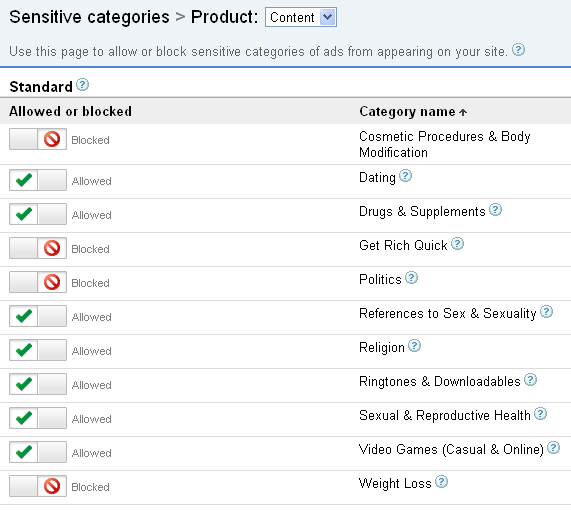

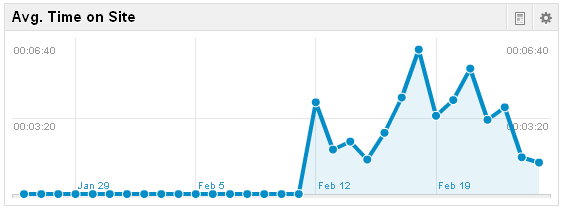

Can you tell me some good affiliate programs?
Hi Sam! Thanks for a good question – We have some great affiliate information in Day Two. Without knowing more about your site and content, it’s hard to say what would be best suited to your needs. If you’d like to drop us a line with more information, we’d be happy to help as best we can.
I look forward to reading more of your boot camp posts, especially when you get into explaining how to read the google analytics results. When I look at mine I say this is cool stuff but what does it all mean.
Howdy, Jay! 🙂 That one is going to take some time to put together, but it’s coming for sure. I know there’s a metric honkload of information available, but much of it reads like a foreign language. Sadly, Google’s help features these days seem to be declining as they grow. We’ll get you there, man! One of our favorite features of Analytics is the real-time tracking. It’s under the Home tab, at the top – Real Time (beta.) Also, under the Standard Reporting tab, then Audience, there’s also a great Visitors Flow display which shows you how people are surfing around your site, and where they leave the site. Great stuff.
I’ll bump the Analytics boot camp toward the top of the list and we’ll see if we can get you squared away.